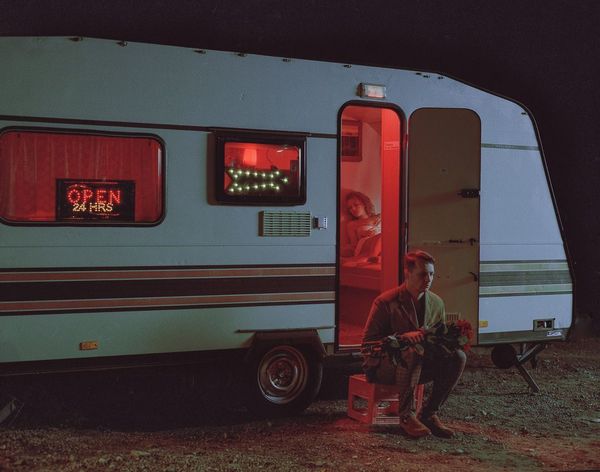On a rocky slope overlooking the Vltava River stands the Jabloňka Castle. In this picturesque location, below the classicist building, are the vineyards that characterize the northern part of Prague. The Czech Marco Maio Architects team was inspired by the discovery and preservation of the historic elements found on the site. Let’s see!
The Czech capital was once known as the ‘city of wine’ since during the reign of Charles IV, the Vltava Valley was surrounded by long-spanning vineyards. Such was the case with the area of Černý Kopec (now called Jabloňka), located near the city, but the Thirty Years’ War between 1618 and 1648 left the vineyards and its surroundings depopulated. Then, in the 18th century, Jabloňka Castle was built in the classicist style, reminiscent of the romanticism of the Mediterranean culture of ancient Greece and Rome. However, the drastic development of Prague once again had an impact on Jabloňka: in 1830, the construction of the northern railway line meant that the once romantic view of the vineyards around the castle disappeared, replaced by a view of the growing metropolis.
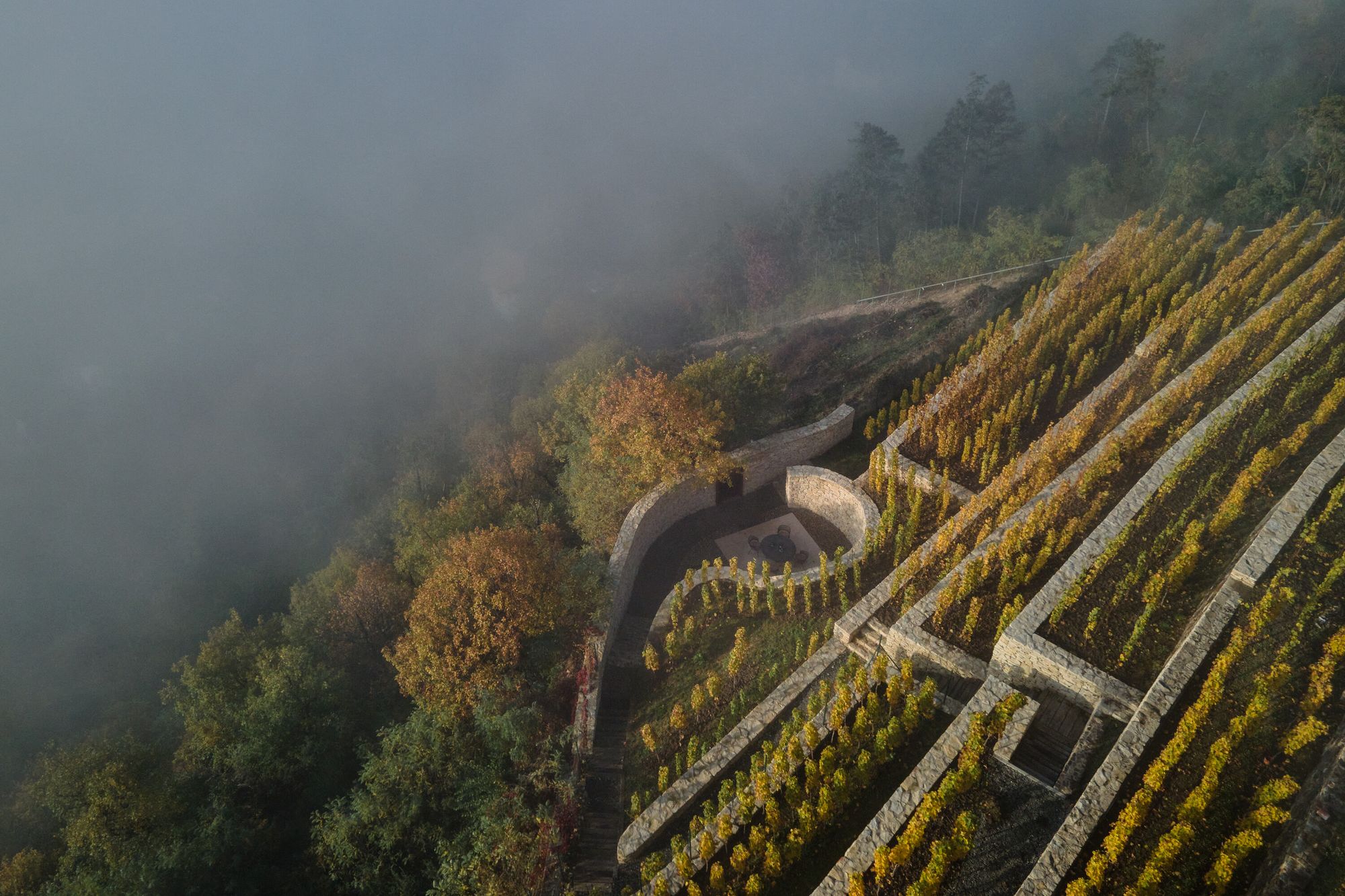
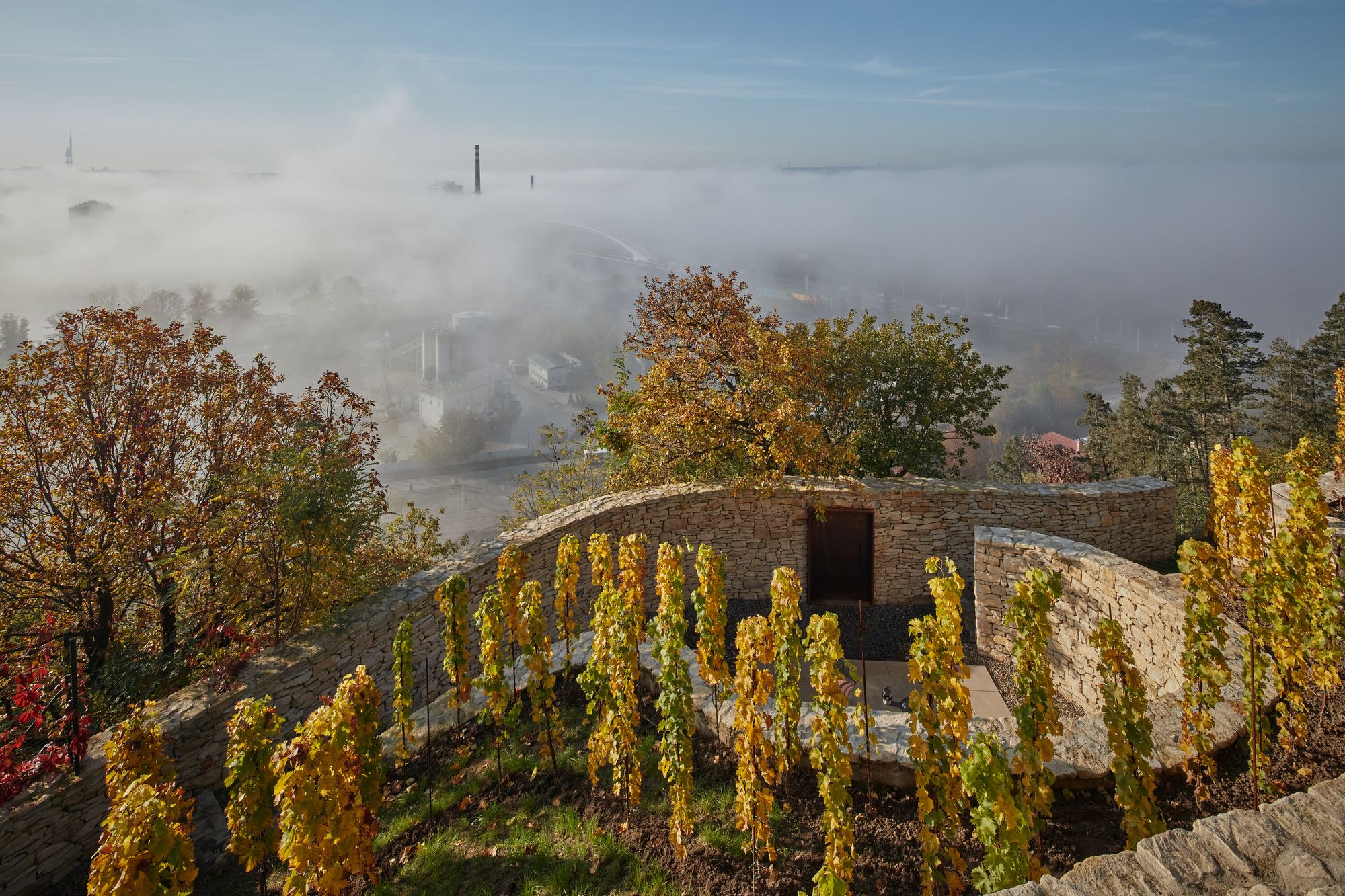

In the late 2000s, the area underwent another radical change: the once romantic castle was surrounded by noisy and carbon-polluted roads. But at the same time, the building was privatized, and the new owners, curious about its past, decided that they wanted to preserve the historical heritage of the place. They restored the vineyards on the adjacent plot and planted the first grape seedlings of the Jabloňka wine in 2013. While cleaning up the old garden, they also discovered the former stone patios, which they intended to reinvent as a wine-tasting venue.
Inspired by the site’s history, the architects aimed to recreate the romantic and idyllic atmosphere of the castle, breaking the direct contact between the area and the city. A forgotten stone ruin was found in the terraced vineyard, providing the starting point for the design: the concept of the renovation of the site was based on the curved shape of the ruin and the Fibonacci spiral motif. The resulting area, enclosed within curved walls, was transformed into a noise-free oasis to draw visitors’ attention to the castle and the vineyard rows.
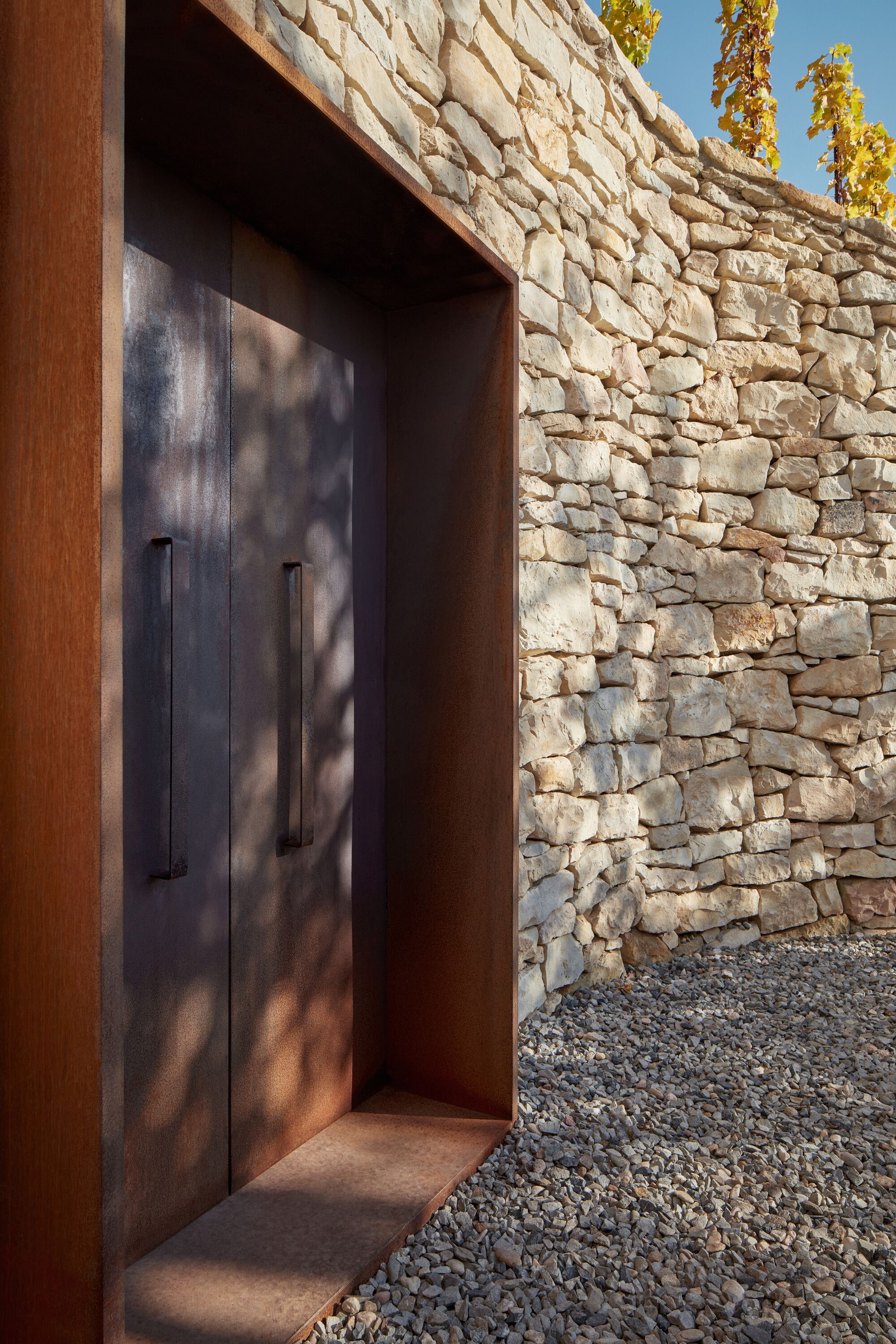
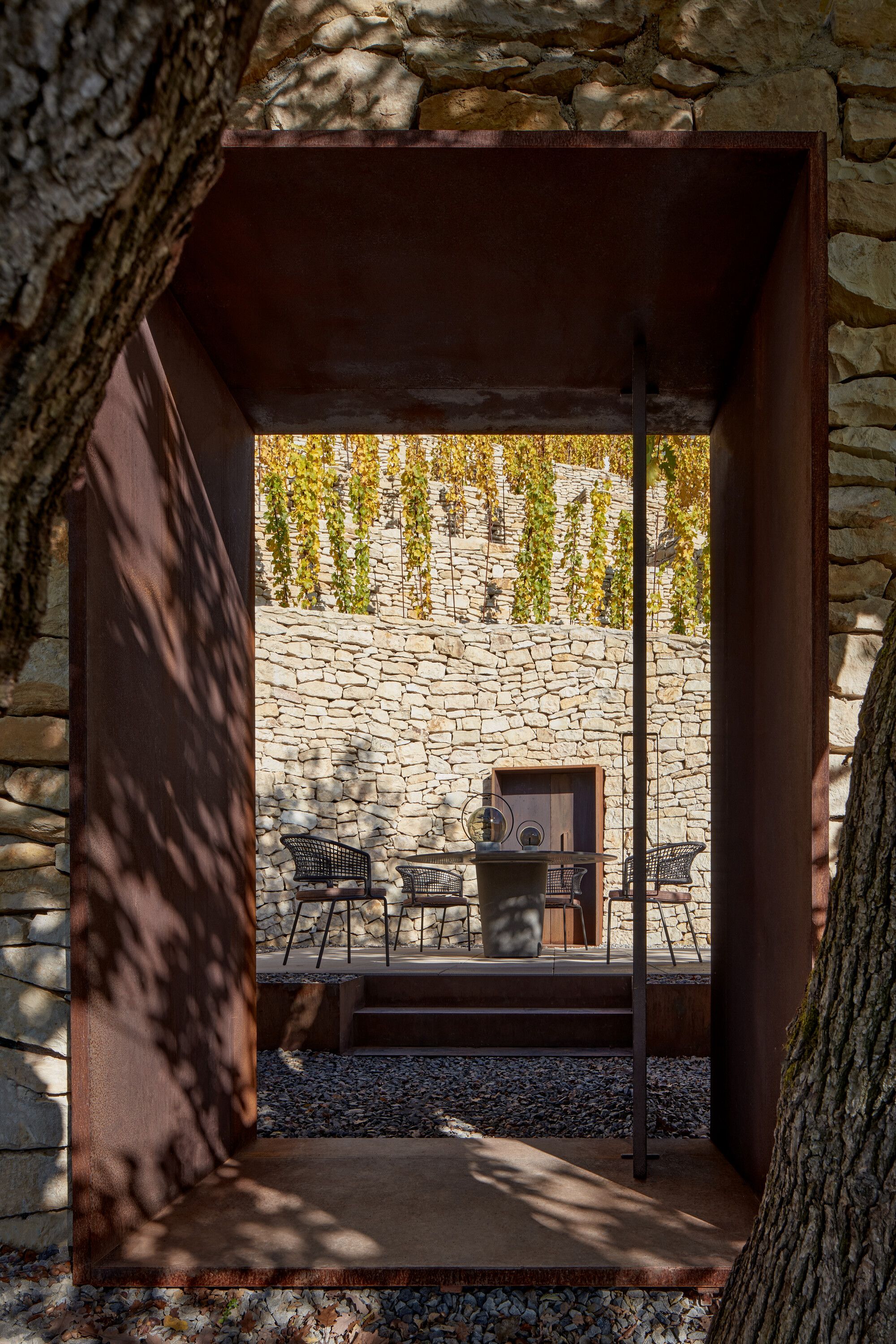
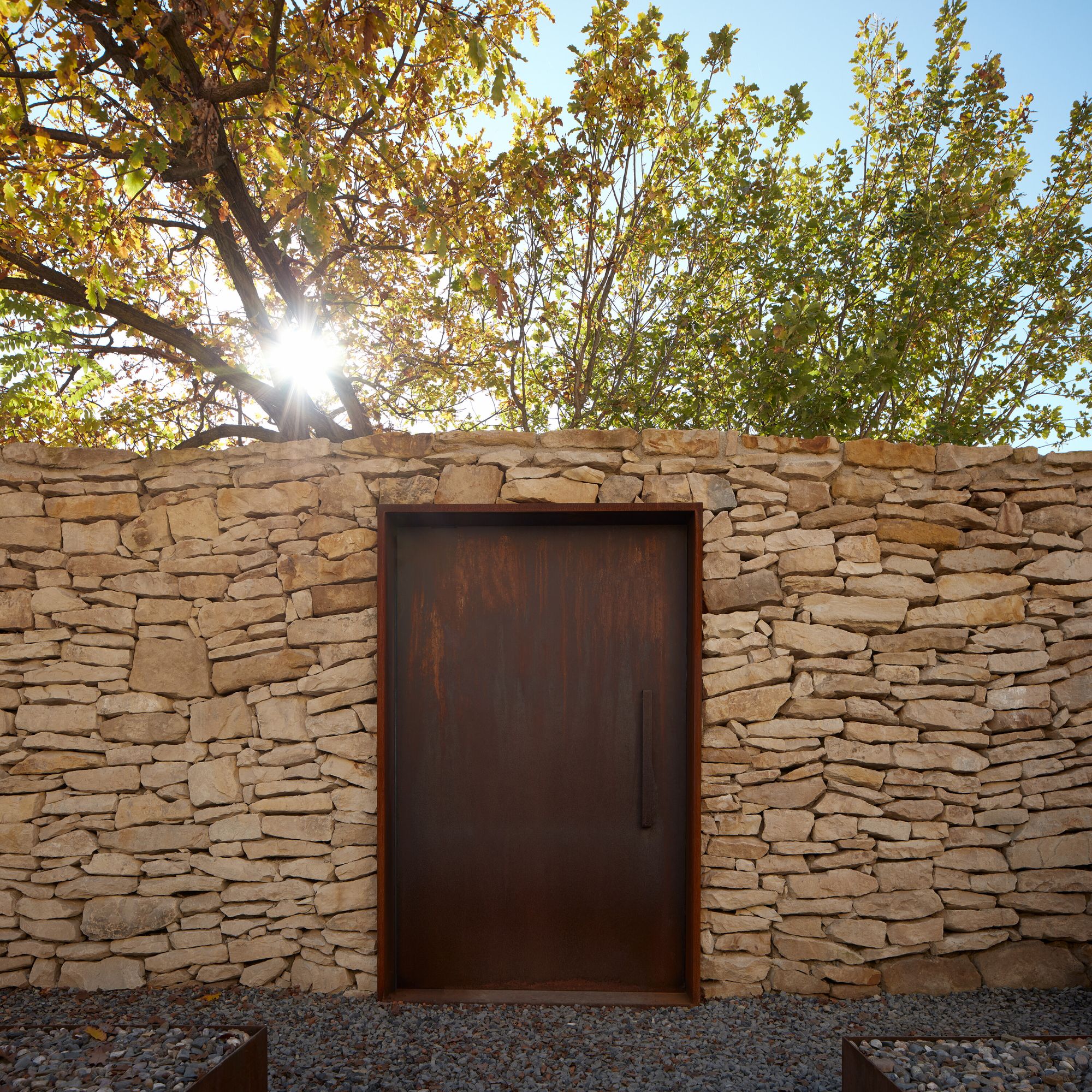

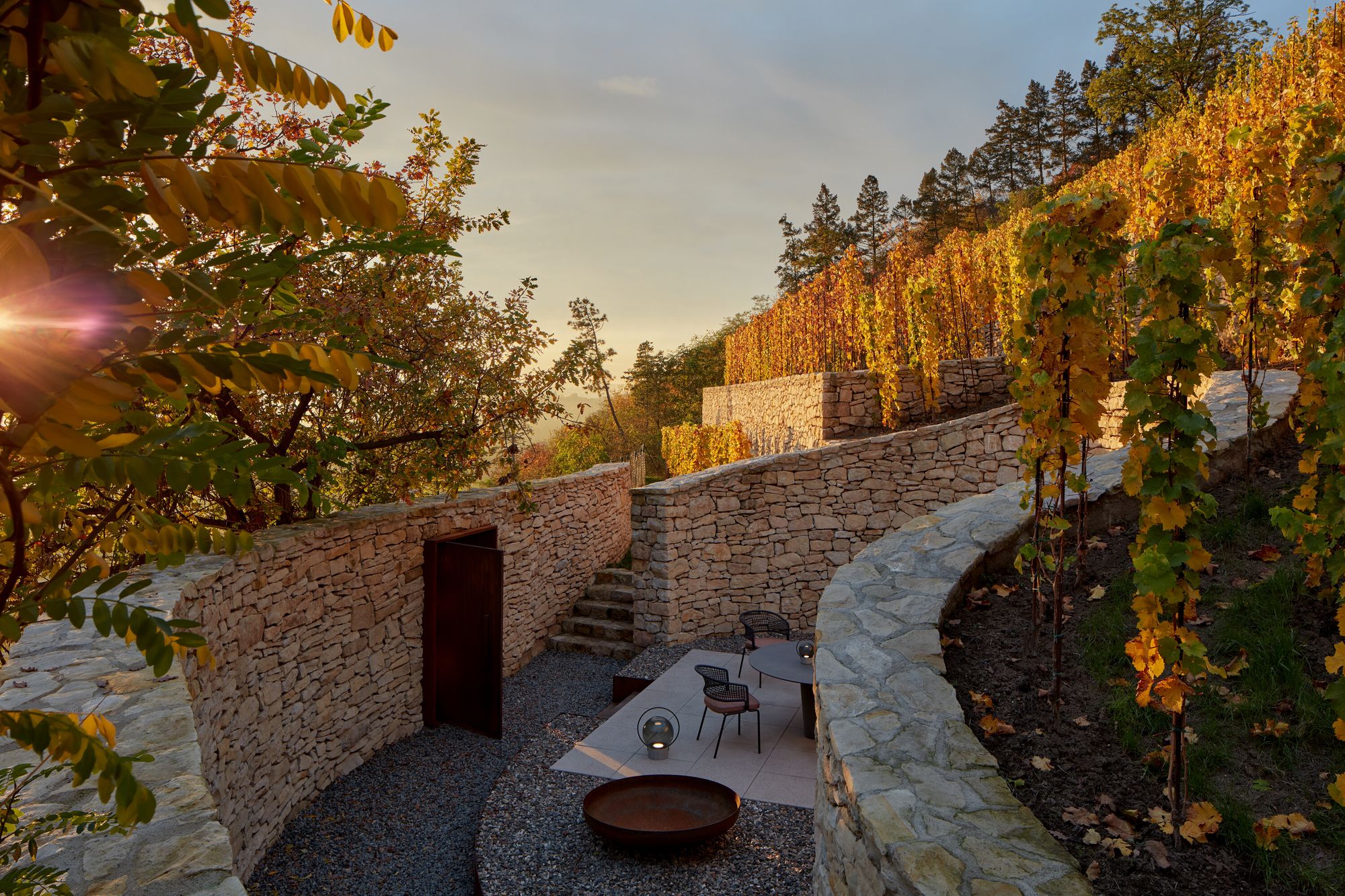
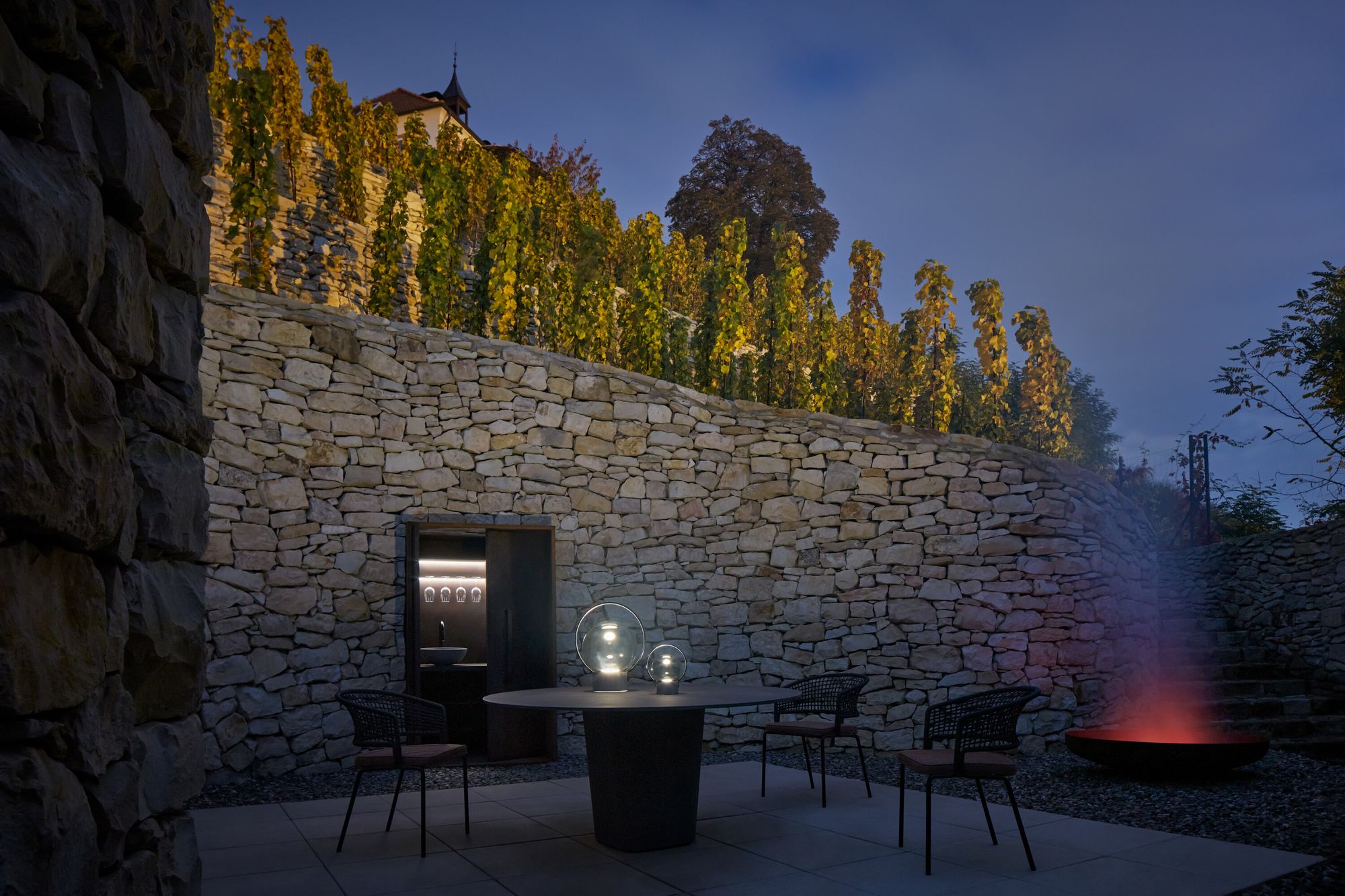
Photos: BoysPlayNice

Do you know exactly how to use emojis? We’ll show you!
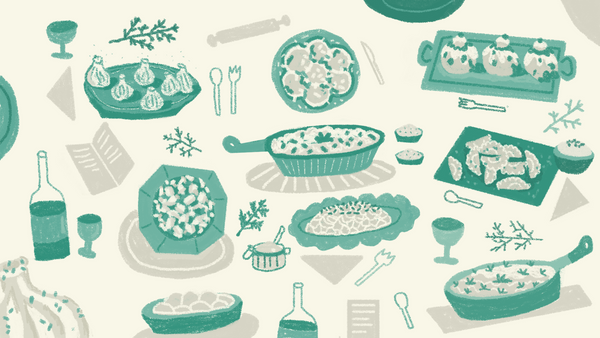
If you want something tasty and cheap: dishes from the region for times of high inflation!
